PowerPoint 2013 -
Getting to Know PowerPoint

PowerPoint 2013
Getting to Know PowerPoint


/en/powerpoint2013/understanding-office-365/content/
PowerPoint 2013 is a presentation software that allows you to create dynamic slide presentations. Slideshows can include animation, narration, images, videos, and much more.
When you open PowerPoint 2013 for the first time, the Start Screen will appear. From here, you'll be able to create a new presentation, choose a template, and access your recently edited presentations.
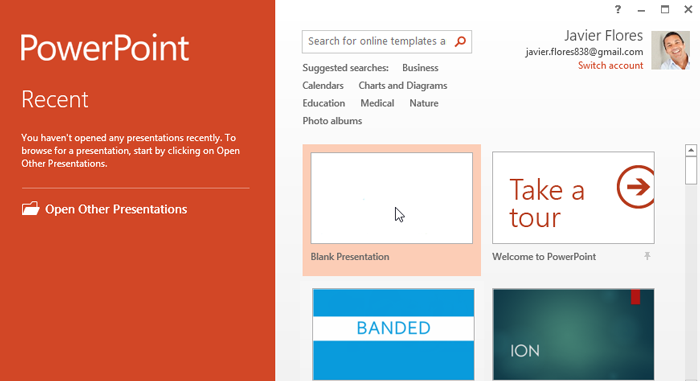 Creating a blank presentation
Creating a blank presentation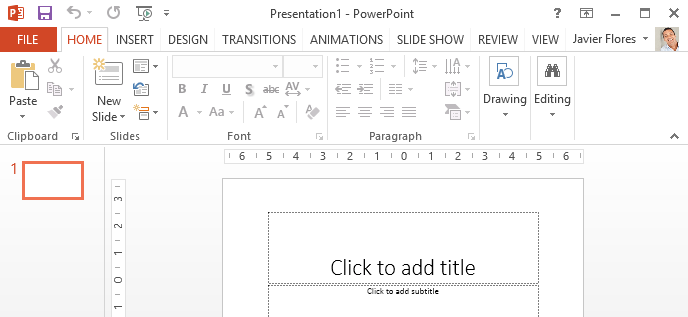 A blank presentation
A blank presentationPowerPoint 2013 is similar to PowerPoint 2010. If you've previously used PowerPoint 2010, PowerPoint 2013 should feel familiar. But if you are new to PowerPoint or have more experience with older versions, you should first take some time to become familiar with the PowerPoint 2013 interface.
Click the buttons in the interactive below to become familiar with the PowerPoint 2013 interface.
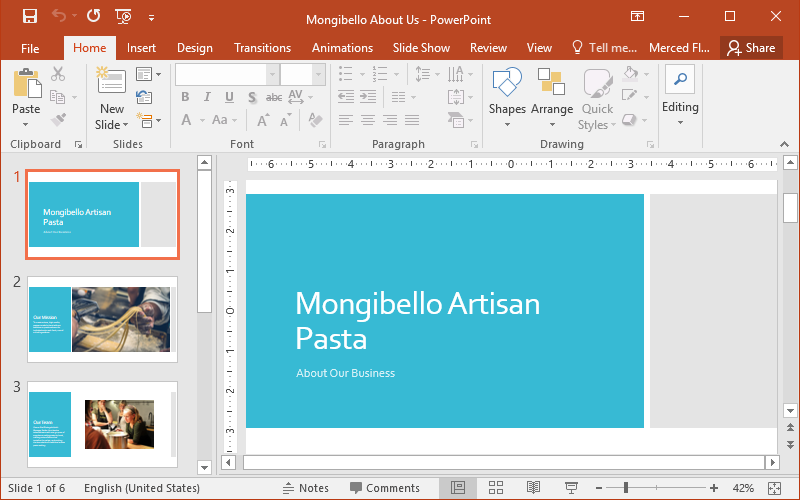
If you've previously used PowerPoint 2010 or 2007, PowerPoint 2013 will feel familiar. It continues to use features like the Ribbon and the Quick Access toolbar—where you will find commands to perform common tasks in PowerPoint—as well as Backstage view.
PowerPoint 2013 uses a tabbed Ribbon system instead of traditional menus. The Ribbon contains multiple tabs, each with several groups of commands. You will use these tabs to perform the most common tasks in PowerPoint.
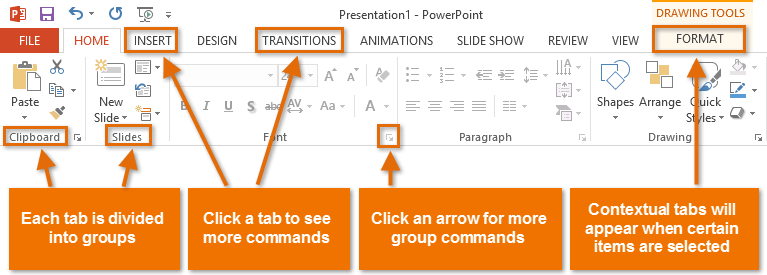 The Ribbon
The RibbonYou'll need to move between tabs to perform common tasks in PowerPoint. Knowing where to find the right command will make PowerPoint easier to use.
Click the arrows in the slideshow below to learn more about the different commands available within each tab on the Ribbon.
The Ribbon is designed to respond to your current task, but you can choose to minimize it if you find that it takes up too much screen space.
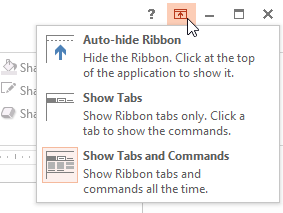 Ribbon display options
Ribbon display options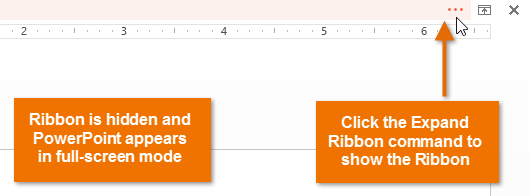 Auto-hiding the Ribbon
Auto-hiding the Ribbon
Located just above the Ribbon, the Quick Access toolbar lets you access common commands no matter which tab is selected. By default, it includes the Save, Undo, Repeat, and Start Presentation commands. You can add other commands depending on your preference.
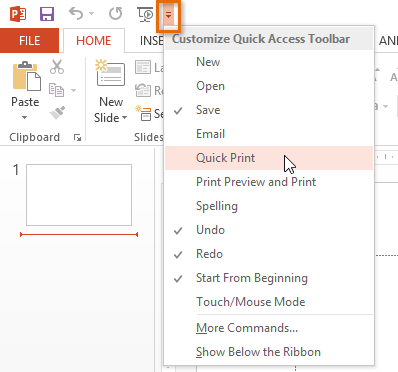 Adding a command to the Quick Access toolbar
Adding a command to the Quick Access toolbar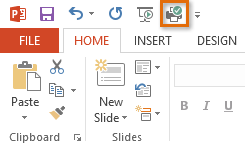 The command added to the Quick Access toolbar
The command added to the Quick Access toolbarPowerPoint includes several tools to help organize and arrange content on your slides, including the Ruler, guides, and gridlines. These tools make it easier to align objects on your slides. Simply click the check boxes in the Show group on the View tab to show and hide these tools.
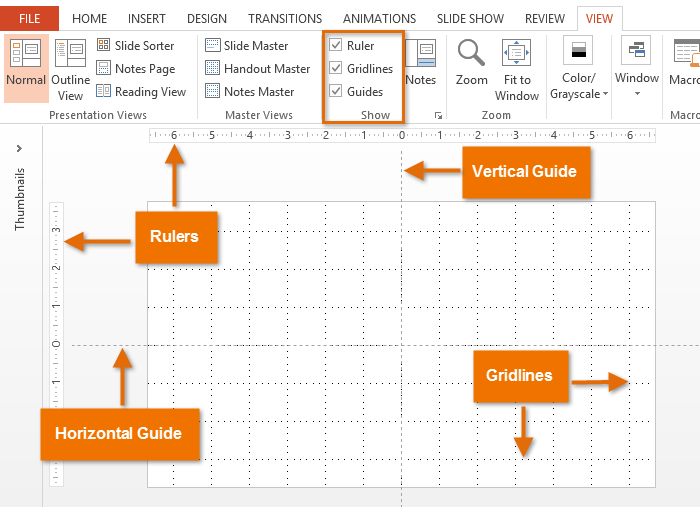 The Ruler, Guidelines, and Grids
The Ruler, Guidelines, and GridsSimply click and drag to move the horizontal or vertical guides to a new position.
Backstage view gives you various options for saving, opening, printing, and sharing your presentations.
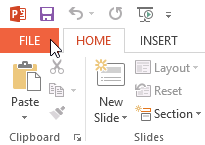 Clicking the File tab
Clicking the File tabClick the buttons in the interactive below to learn more about using Backstage view.
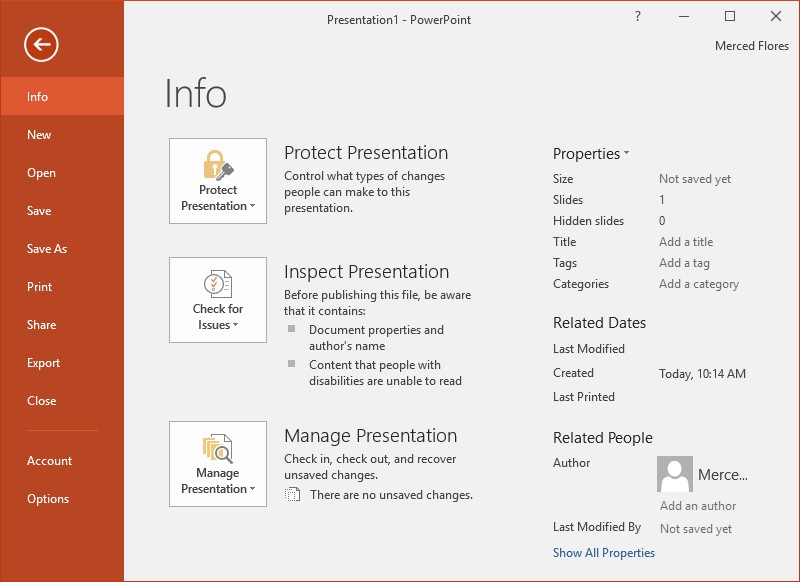
You can review our lesson on Working with Your Microsoft Account and OneDrive to learn more about using OneDrive.
/en/powerpoint2013/creating-and-opening-presentations/content/